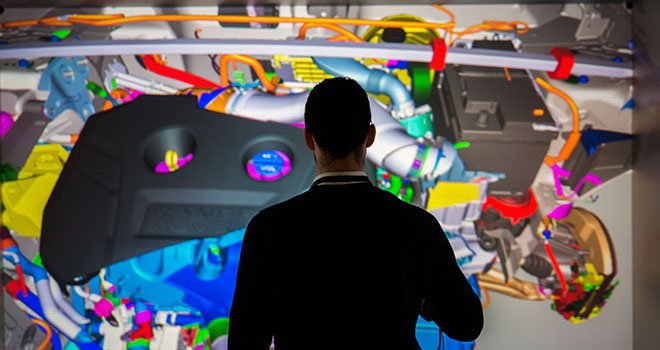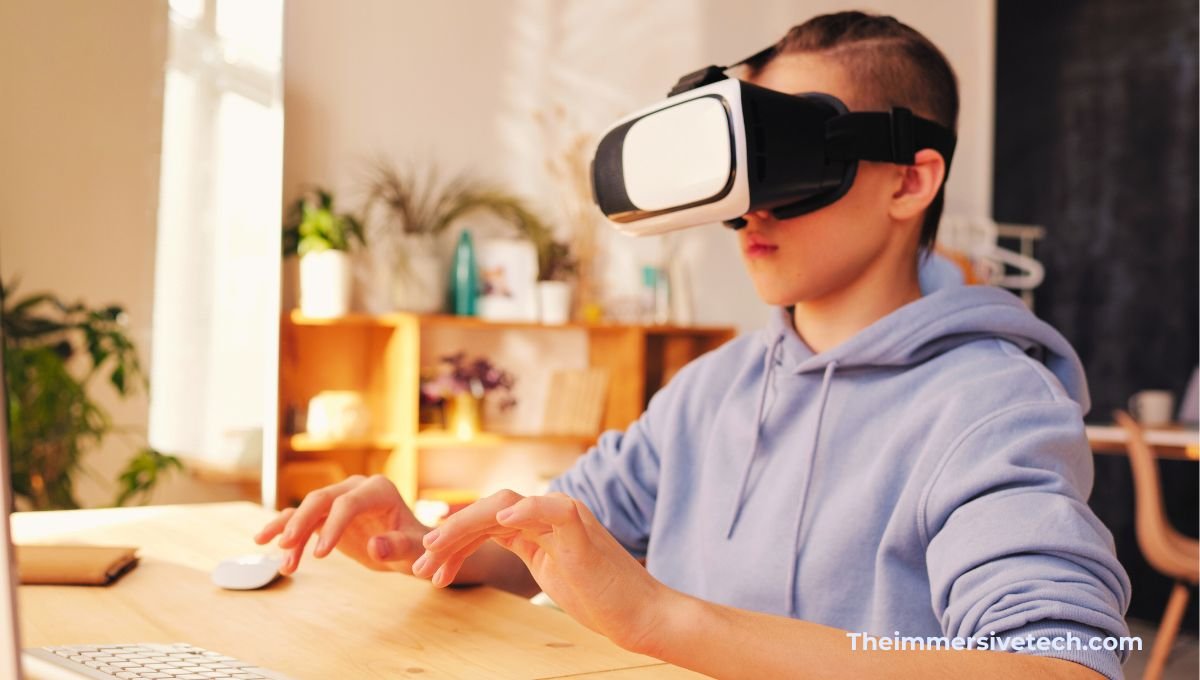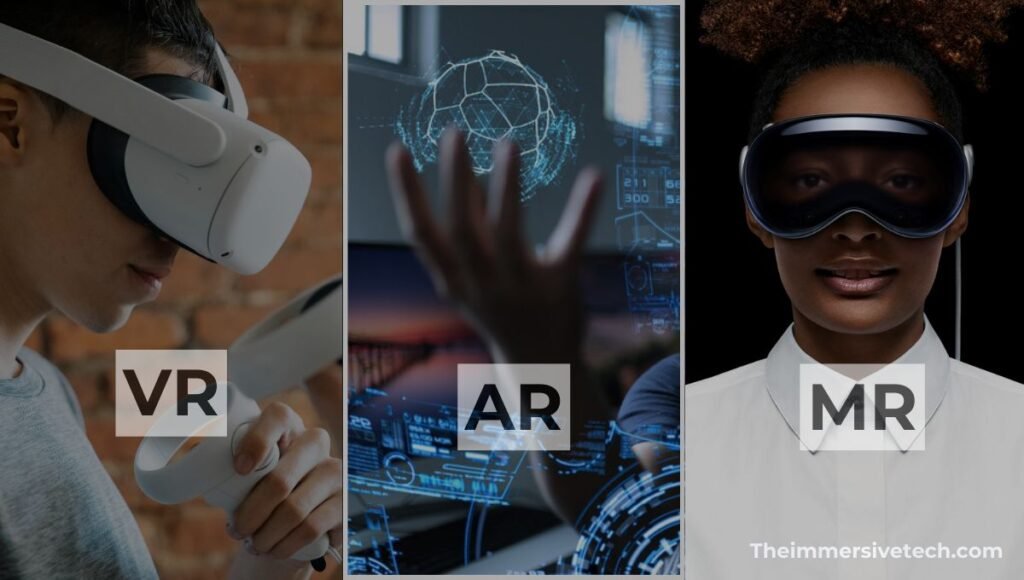Virtual reality has been popularly known for gaming. However, it has a lot packed in the future for many different industries other than entertainment and gaming. In this article, we will cover the 13 major industries that VR is impacting vastly.
Before we go ahead with the practical use of VR, here’s a brief description of what virtual reality is: Virtual reality is a term used for a computer-generated environment that a user can interact with. The user gets immersed in the virtual environment as their senses get tricked into thinking that the virtual elements are real.
13 Applications of Virtual Reality
Here is a list of 13 industries where VR is being utilised among its numerous applications:
- Entertainment
- Healthcare
- Exposure therapy
- Events and Meetings
- Education and Learning
- Marketing
- Tourism
- Automotive
- Architecture
- Military
- Online Shopping
- Space Exploration
- Fitness
Let’s have a detailed view of each of these.
1. Entertainment
1.1.
Virtual reality is popular in the entertainment industry as it enhances the user experience. It heightens the experience with 360 films, increasing the audience’s emotional connection with the film’s characters.
1.2.
From another perspective, VR could revolutionize the way that media content is produced. One of the companies that showcases this well is Flipside XR. The company provides real-time animation and motion capture. Hence, creators can build interactive animated shows via VR.
2. Healthcare
2.1
VR has a major part in improving precision, diagnosis, and treatment in the healthcare sector. In surgery, virtual reality is used to prepare the surgeons for being in the Operation Theater. For instance, companies such as Osso VR allow surgeons to practice surgery on virtual bodies.

2.2
Additionally, companies such as Altoida are trying to develop digital biomarks to treat neurological diseases, such as Alzheimer’s. VR has also helped make an earlier diagnosis, facilitate clinical trial participation, and precise monitoring of disease progression.
2.3
In medical training, virtual reality enables remote consultations and treatments with increased surgical precision. Therefore, improving patient outcomes. Since medical collaboration with experts becomes accessible with VR, the healthcare industry has also seen improved emergencies.
3. Exposure Therapy
3.1
Virtual reality exposure therapy, also known as VRET, immerses the patients in a virtual environment to help them confront their trauma. Such a therapy is usually given to patients dealing with OCD, PTSD, traumatic brain injury, anxiety and panic disorders.
VRET creates an immersive environment mimicking the patient’s traumatic memories. It includes creating the sights, sounds, smells, and vibrations to recreate the emotional experience. VR therapy is also used to treat specific phobias.
Read more: How Virtual Reality Works?
4. Event and Meetings
4.1
Since the rise of Covid in 2020, virtual meetings, events, and conferences have become the new normal. For instance, you can see your friend from across the world as if you both are in the same room.
Platforms such as Remio VR, Rec Room, and Horizon Workrooms can be used to perform collaborative meetings. Since these platforms include collaborative tools such as whiteboards and freehand 3D drawings, it becomes easy to run remote and hybrid meetings.
Additionally, some people use virtual reality for events and to network with others. The most benefit of such meetings goes to the attendees as they can immerse themselves into the concept and connect better with others.
5. Education and Learning
5.1
In the education industry, virtual reality does great at retaining the students’ attention. Learning in an immersive environment with 3D diagrams allows the students to understand complex concepts with ease. Additionally, students can learn with other students from across the globe.
5.2
On the other hand, learning new skills has been more consistent and affordable. More than that, learners build confidence over time as they learn in a virtually simulated environment that seems more real than a screen.
6. Marketing
6.1
With virtual reality’s shift in marketing, companies are more focused on making customers feel good. Brands use VR to create a sense of connection with the customers. Hence, leaving a sense of connection in people.
6.2
On the other hand, people can now try the products to see if they’ll like it or not. For example, if someone wants to purchase a couch, they can virtually ‘try’ if it’d look nice in the hall. Additionally, VR offers flexible voice control options for browsing and online shopping.
7. Tourism
7.1
The global pandemic of 2020 led to a lot of travel plans to shut down. But at the same time, it led to a rise in virtual travel. It’s exactly like you can experience a visit to the Louvre Museum in Paris from the comfort of your home.
With the development of virtual travel in recent years, you can now try a vacation before deciding on it. Back in 2015, Thomas Cook launched their ‘Try Before You Fly’ VR experience which allowed people to experience a holiday before booking it. This 5-minute trial of holidays resulted in a 190% uplift in New York excursion bookings.

VR Expeditions 2.0 is another way of tourism becoming accessible. This way, users can travel anywhere they want from their homes, with hundreds of virtual field trips available.
8. Automotive
8.1
VR serves the automotive industry by reducing the number of prototypes built per vehicle line. It’s possible as engineers and designers get to experiment with the look of a vehicle before investing in expensive prototypes.

Additionally, VR is used to analyze road scenarios and the behavior of cars during the manufacturing stage. Simulated situations allow the manufacturers to make changes to the prototype.
Virtual reality (VR) and artificial intelligence (AI) are also widely used in the development of smart cars.
9. Architecture
9.1
Virtual reality makes it possible for architects to not only see what a building or space will look like, but also feel it. Since it creates a better sense of the design, it saves an immense amount of time and money.
For example, if someone wants to add an extension to their property, they can feel the changes before construction begins. Therefore, increasing the chances of customer satisfaction as well as cost efficiency.
Architects have indeed been using 3D models for years, but immersing themselves in a virtual model allows them to go into the details.
10. Military
10.1
Since military trainees have to prepare for dangerous battles, VR helps them train in a virtual environment with minimal risks. Additionally, virtual reality helps soldiers suffering from battlefield trauma to overcome it and prepare for the next unpredictable situation.
11. Online Shopping
11.1
In online shopping, it has been difficult for customers to analyze if they’ll like the product later on or not. However, VR can now enhance their online shopping experience by helping them interact with the product in a natural way.
Customers can see the product from a 360∘ angle, interact with it naturally, and even try on the products. Hence, allowing them to make more informed decisions about their purchases.
12. Space Exploration
Virtual reality is used in space exploration in three ways: Astronaut training, Space exploration, and Space education.
12.1
In astronaut training, VR assists astronauts in practising tasks outside of the spacecraft, such as navigating the International Space Station (ISS) in zero gravity. It also provides the astronauts with detailed representations of the Martian landscape.
12.2
In space education, VR can also engage the students by creating an immersive experience of real astronauts. Lastly, scientists can annotate 3D models of space elements virtually. Virtual reality can also allow users to explore celestial bodies by creating an immersive environment.
13. Fitness
13.1
There are fitness VR apps available nowadays that allow you to upgrade your home workout experience. Two of the most popular VR fitness apps include Supernatural and Fit XR.
These apps allow you to join an immersive fitness club with new classes added every day. To make the workout even more fun, you can participate in the live classes with your friends — all from your home.
13.2
Additionally, you can also run a static bike while wearing a VR headset, making it feel like you’re biking around real locations. You can use apps such as Vzfit and Holofit to experience the same.
Conclusion
VR is taking the lead in a lot of industries, more than we may think. It’s also likely to influence our daily activities such as our hobbies, etc, in the future. The possibilities are endless…at least to say.
Interested in virtual reality, read this full introduction guide on Virtual Reality







